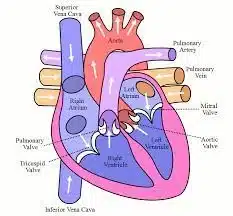The Four Fundamental Forces
There are four universal or fundamental forces in nature. The four fundamental forces act upon us every day, whether we realize it or not. Without these forces, all matter in the world will fall apart.
- The Four Fundamental Forces of Nature are Gravitational force, Weak Nuclear force, Electromagnetic force and Strong Nuclear force.
- These forces govern everything that happens in the universe.
- The weak and strong forces are effective only over a very short range and dominate only at the level of subatomic particles.
- Gravity and Electromagnetic force have infinite ranges.
strengths and Range of Four Fundamental Forces
- Gravitational Force – Weakest force; but has infinite range.
- Weak Nuclear Force – Next weakest; but short range.
- Electromagnetic Force – Stronger, with infinite range.
- Strong Nuclear Force – Strongest; but short range.
Gravitational Force: Fundamental Forces of Nature
- The gravitational force is weak fundamental force, but very long-ranged.
- Furthermore, it is always attractive.
- It acts between any two pieces of matter in the Universe since mass is its source.
- Gravity is the attraction between two objects that have mass or energy.
- Isaac Newton was the first to propose the idea of gravity, supposedly inspired by an apple falling from a tree. He described gravity as a literal attraction between two objects.
- Centuries later, Albert Einstein suggested, through his theory of general relativity, that gravity is not an attraction or a force. Instead, it’s a consequence of objects bending space-time. A large object works on space-time a bit like how a large ball placed in the middle of a sheet affects that material, deforming it and causing other, smaller objects on the sheet to fall toward the middle.
- Though gravity holds planets, stars, solar systems and even galaxies together, it turns out to be the weakest of the fundamental forces, especially at the molecular and atomic scales.
- Think of it this way: How hard is it to lift a ball off the ground? Or to lift your foot? Or to jump? All of those actions are counteracting the gravity of the entire Earth. And at the molecular and atomic levels, gravity has almost no effect relative to the other fundamental forces.
Weak Nuclear Force: Fundamental Forces of Nature

- The weak nuclear force, also called the weak nuclear interaction, is responsible for particle decay. This is the literal change of one type of subatomic particle into another.
- So, for example, a neutrino (opens in new tab)that strays close to a neutron can turn the neutron into a proton while the neutrino becomes an electron.
- The weak force is responsible for radioactive decay and neutrino interactions. It has a very short range and as its name indicates, it is very weak.
- Physicists describe this interaction through the exchange of force-carrying particles called bosons. Specific kinds of bosons are responsible for the weak force, electromagnetic force and strong force. In the weak force, the bosons are charged particles called W and Z bosons.
- The weak force is critical for the nuclear fusion reactions that power the sun and produce the energy needed for most life forms here on Earth.
- It’s also why archaeologists can use carbon-14 to date ancient bone, wood and other formerly living artifacts.
- Carbon-14 has six protons and eight neutrons; one of those neutrons decays into a proton to make nitrogen-14, which has seven protons and seven neutrons. This decay happens at a predictable rate, allowing scientists to determine how old such artifacts are.
Electromagnetic Force: Fundamental Forces of Nature
- The electromagnetic force, also called the Lorentz force, acts between charged particles, like negatively charged electrons and positively charged protons.
- The electromagnetic force causes electric and magnetic effects such as the repulsion between like electrical charges or the interaction of bar magnets.
- The greater the charge, the greater the force.
- It is long-ranged but much weaker than the strong force.
- It can be attractive or repulsive and acts only between pieces of matter carrying an electrical charge.
- Electricity, magnetism, and light are all produced by this force.
- The electric component acts between charged particles whether they’re moving or stationary, creating a field by which the charges can influence each other.
- But once set into motion, those charged particles begin to display the second component, the magnetic force. The particles create a magnetic field around them as they move. So when electrons zoom through a wire to charge your computer or phone or turn on your TV, for example, the wire becomes magnetic.
Strong Nuclear Force: Fundamental Forces of Nature
- The strong interaction is very strong but very short-ranged. It is responsible for holding the nuclei of atoms together.
- It is basically attractive but can be effectively repulsive in some circumstances.
- Much like the weak force, the strong force operates only when subatomic particles are extremely close to one another. They have to be somewhere within 10^-15 meters from each other, or roughly within the diameter of a proton.
- The strong force is odd, though, because unlike any of the other fundamental forces, it gets weaker as subatomic particles move closer together. It actually reaches maximum strength when the particles are farthest away from each other, according to Fermilab.
- Once within range, massless charged bosons called gluons transmit the strong force between quarks and keep them “glued” together. A tiny fraction of the strong force called the residual strong force acts between protons and neutrons.
- Protons in the nucleus repel one another because of their similar charge, but the residual strong force can overcome this repulsion, so the particles stay bound in an atom’s nucleus.
- Thus, the quarks inside of the protons and neutrons are bound together by the exchange of the strong nuclear force.
- While they are close together the quarks experience little force, but as they separate the force between them grows rapidly, pulling them back together. To separate two quarks completely would require far more energy than any possible particle accelerator could provide.
- The strong nuclear force, also called the strong nuclear interaction, is the strongest of the four fundamental forces of nature. It’s 6 thousand trillion trillion trillion (that’s 39 zeroes after 6!) times stronger than the force of gravity.








